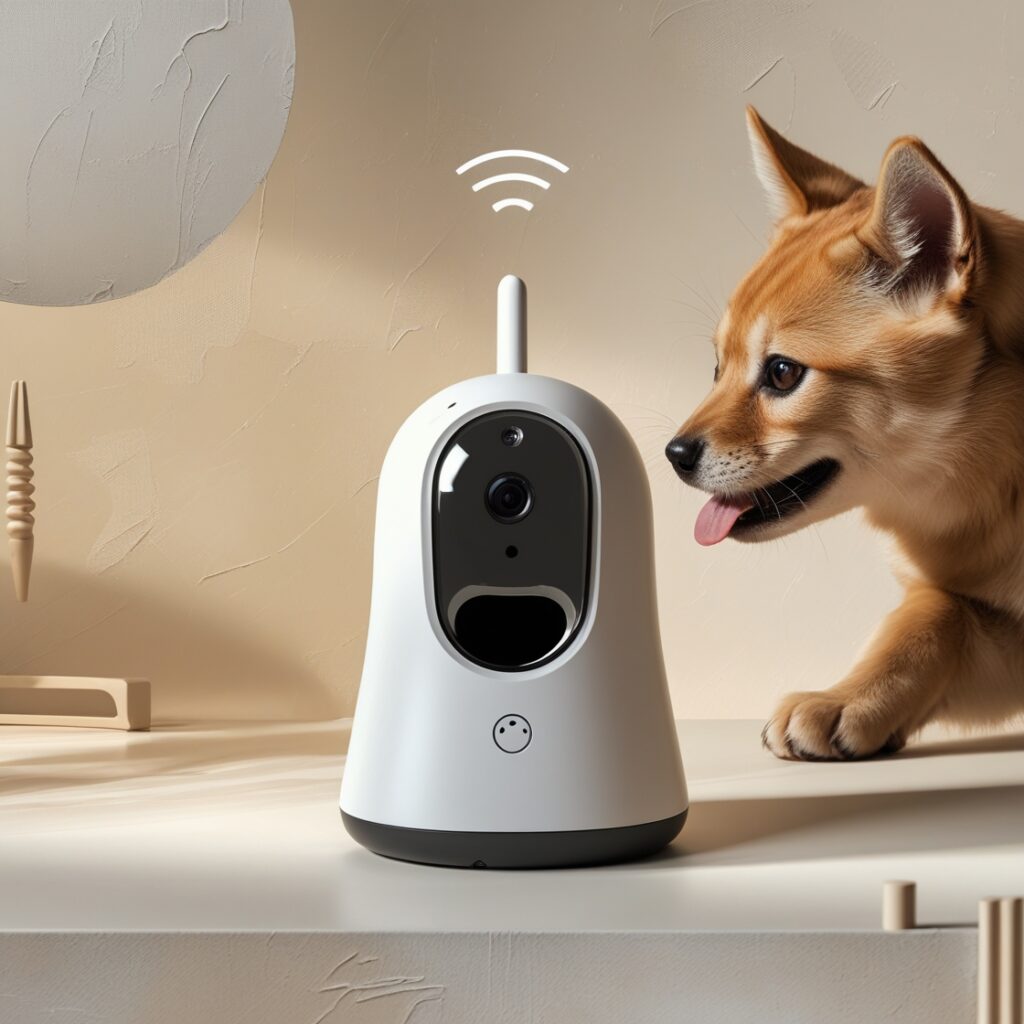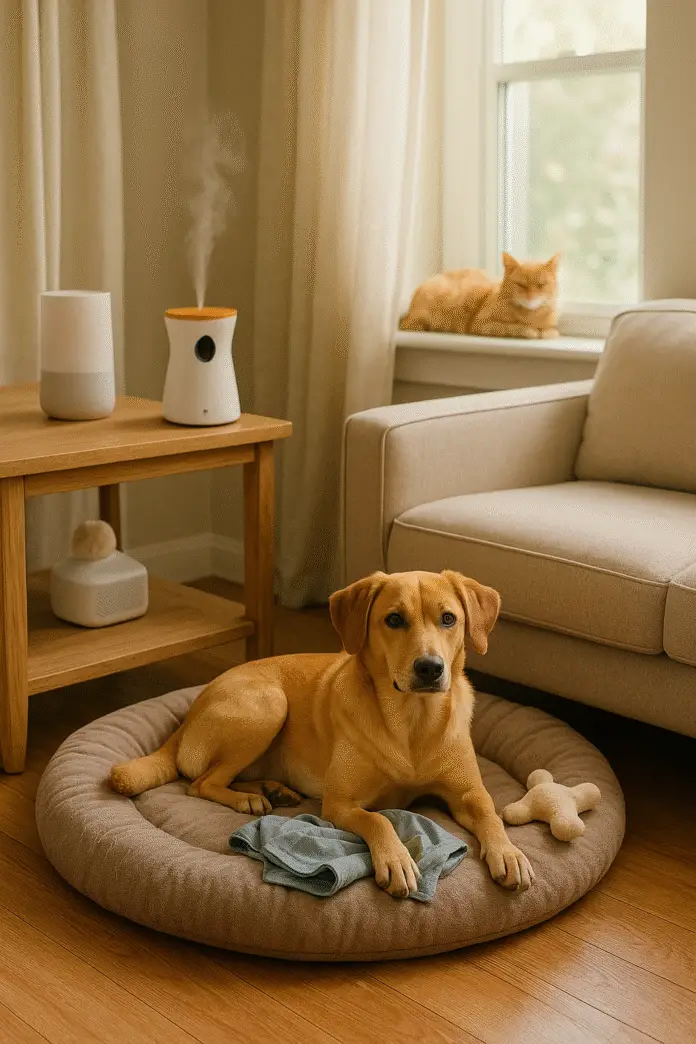Pets, likewise, bond emotionally with their owner. At those times when you are not around, even if it is just for a few hours, it could cause your furry friend a lot of distress. The suffering from this is recognized as pet separation anxiety, and it is more rampant than most pet owners are aware of. However, knowledge and some right techniques can help you comfort your four-legged friend and make it feel safe when you are away.
In this blog post, we are going to look at the reasons behind pet separation anxiety, the signs you should look for, and the various ways you can soothe your pet’s mental welfare.
What Does Pet Separation Anxiety Mean?
Pet separation anxiety is a pet psychological disorder feature that manifests when pets are extremely stressed and show panic when they are alone or separated from their owners. It is a condition that may appear in dogs more often but it can also be seen in cats and other pets. A sudden change in the daily routine, a move to a new home, losing a family member, or loneliness are among the causes of this kind of anxiety.

Typical Symptoms of Separation Anxiety:
- Too loud barking, howling, or meowing, being anxious
- Destructive behaviors such as chewing furniture or damaging the door with scratching
- Defecating or urinating indoors (it’s like the pet doesn’t remember it was house-trained)
- Walking all around the house in a fast manner or repeatedly spinning in circles
- He tried to break out
- Drooling or heavy and quick breathing
Early recognition of these symptoms will enable you to take charge of the situation before the anxiety gets worse and becomes difficult to manage.
Causes of Separation Anxiety in Pets
Regardless of the fact that every animal has his own character, separation anxiety is a combination of environmental, psychological, and genetic factors. Many rescue pets may have been taken to the shelter because of the previous owner’s abandonment. Puppies and kittens that were not properly socialized may be more susceptible to anxiety and the consequent stress. The same applies to those pets that are used to being around people continuously (especially during remote work or vacation) who probably get upset when their humans start to have a regular schedule again.
The main reasons why animals experience separation anxiety are as follows:
- Sudden changes in daily routine
- Loss or absence of a family member
- Over-attachment to the pet owner
- Lack of stimulation or exercise
- Past trauma or abandonment
A clear knowledge of the reason can help in coming up with the strategy to tackle anxiety.
Effective Ways for Reducing Separation Anxiety in Pets
Below are some proven and pet-friendly methods to manage and reduce separation anxiety:
1. Gradual Desensitization
Initially, depart for very short periods and progressively keep on increasing the time duration. The pet realizes that its owner returns the same moment and thus has a new view of the absence and doesn’t take it as a punishment
Tip: Desensitize leaving triggers such as keys and shoes by practicing before the real departure is a good idea.
2. Create a Safe and Comfortable Space

Specify a silent and warm place in the house where the pet can go to when you are not in. Provide the space with the pet’s favorite toys, the bed, and your worn clothes that have your smell on it.
3. Use Calming Products
For instance, using scent like pheromone through diffusers (such as Adaptil and Feliway), the calming collar, and wrap (like the ThunderShirt) will have the pet relaxed. Oils and CBD treats are other supplements of natural origin which help in stress reduction.

4. Increase Physical and Mental Stimulation
An active pet is also a pleased pet. Let it have adequate exercise like walks, games, and toys every day. Moreover, puzzle feeders and toys that dispense treats are good for keeping them involved intellectually when you are away.
Image Suggestion: Either a dog or a cat playing with a treat puzzle or a stimulating toy.
5. Follow a viable agenda
Conversely, pets become healthier and happier in a regular environment. Your pet should be fed, played with, and let out to potty at the exact same time throughout the day. By using regular and structured routines, your pet will get the feeling of security and get rid of the indeterminacy of the situation.
6. Train Your Pet to Accept Short Leaves

To prepare your pet for long departures, first get it used to short ones. To explain go away from home for 5 minutes at first, then for 15, with the time gradually being increased. This drills them to realize that they should not be afraid as you will get back.
7. Use Tools to Engage With Friends
Likewise, you can also try a pet camera. Get a pet camera to see and talk to your pet while you are at work. On top, of course, the most sophisticated of such devices allow tossing of treats or cooling music.
Image Suggestion: Screenshot or promotional photo of a pet camera in use.
When to Seek Professional Help
Where your pet shows severe anxiety and the situation keeps going worse, even after the use of behavioral techniques, it is an issue that requires immediate professional help. This is when a veterinarian or a certified behaviorist can determine whether your pet could undergo prescription medication or more intensive behavior modification therapy.
Veterinarians may give the following to help manage the emotional state of your pet:
- Medications designed to relieve anxiety (like fluoxetine or clomipramine)
- Natural calming supplements
- Personalized behavioral training schedules
The benefits of professional advice is that it ensures your pet is receiving the right level of support.
Preventing Future Episodes of Separation Anxiety
After discovering that your pet starts behaving normally again, you must establish good habits to carry on supporting its psychological health. Here’s the learning of the past:
- Avoiding too emotional departures and arrivals−it’s better to keep them calm and relaxed
- Creating and maintaining various daily activities for the pet can improve the pet’s well-being
- Planning safe social activities with dogs or booking a pet sitter every once in a while for other animals, thus variating routine
- Successfully implementing training and desensitization over a long period of time
Conclusion
It takes a lot of effort, understanding, and regularity to tame a pet and reduce their anxiety when being alone. Every pet has their unique personality and the method that is beneficial to one pet might not be to another. The steps to take are to initiate smaller things, watch your pet’s reactions, and make modifications as necessary. With time and affection, you can assist your pet in becoming relaxed, self-sufficient, and content even in your absence.

It does not matter if you are away for a day or the whole weekend, your pet will be able to manage on his own, and that is a happy thought for the two of you. The fact that your pet can deal with the situation confidently is a win-win situation for both of you.




Some really interesting info , well written and loosely user genial.
Good day very nice blog!! Guy .. Excellent .. Wonderful .. I’ll bookmark your blog and take the feeds also…I’m glad to find so many useful information right here within the put up, we want develop more strategies in this regard, thank you for sharing. . . . . .